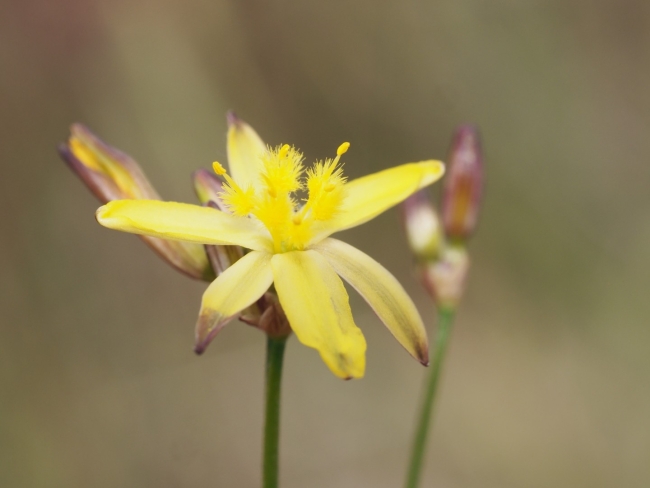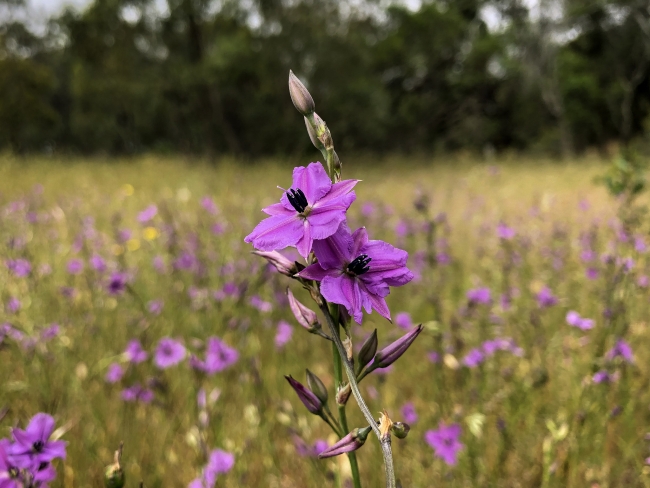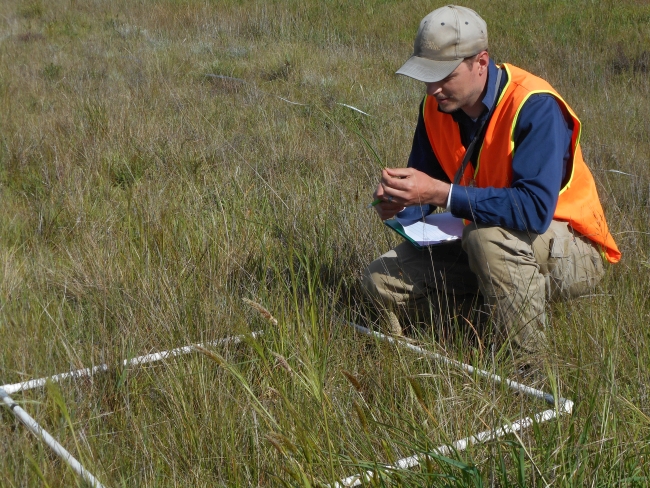Very few ecosystems around the world are as threatened as grasslands. In Victoria, grassland communities across the lowlands are critically endangered, including the Natural Temperate Grasslands of the Victorian Volcanic Plains (VVP), due to historic and current land use practices. ARI has a long history of supporting conservation programs in critically endangered grassy ecosystems. Since 2001, ARI ecologists have worked with Catchment Management Authorities (CMAs), DELWP, Trust for Nature and landholders to investigate the best ways to manage native grasslands on farms. Through monitoring, modelling and engagement programs, ARI’s research aims to improve grassland management and quality for future generations.
Currently, ARI contributes to VVP grassland conservation on private land through the following projects:
The VVP Grassland Monitoring Program (2018-2023).
This program informs grassland management on private land in the Glenelg Hopkins CMA region, and engages with landowners and other stakeholders about the importance of grassland conservation. This program uses field monitoring and statistical modelling to detect changes in grassland quality associated with management practices such as livestock grazing, burning and weed control.
The VVP Grassland Modelling Project (2020-2021).
This project developed customised models to identify ecologically valuable grasslands in the private estate for conservation investment. To do this, ARI researchers modelled the current extent and main grass species composition of native temperate grasslands within the Glenelg Hopkins


CMA region. The models combined both satellite imagery and field data from a variety of monitoring programs, with expert knowledge about ecological patterns in the landscape. This research is guiding priority investment to protect grasslands on farms.
Both projects are part of The Victorian Volcanic Plains Recovery Project which is supported by the Glenelg-Hopkins CMA, through funding via The Federal Government's National Landcare Program: Phase 2.
For more information on protecting the VVP grasslands, see the Melbourne Strategic Assessment Program webpage.
For more information on ARI's involvement grasslands on the private estate contact: brad.farmilo@delwp.vic.gov.au
The following journal articles are available:
- Farmilo, B.J. and Moxham, C. (2019) Decadal plant composition changes in grazed native grassland Ecological Management & Restoration 20: 231-238
- Koerner, S.E., Smith, M.D., Burkepile, D.E., … Moxham C., …(2018) Change in dominance determines herbivore effects on plant biodiversity Nature Ecology & Evolution 2: 1925-1932
- Schultz, N., Keatley, M., Antos, M., Wong, N., Moxham, C., Farmilo, B. and Morgan, J.W. (2017) The golf ball method for rapid assessment of grassland structure Ecological Management & Restoration 18: 134-140
- Mavromihalis, J., Dorrough, J., Clark, S., Turner, V. and Moxham, C. (2013) Manipulating livestock grazing to enhance native plant diversity and cover in native grasslands The Rangeland Journal 35: 95-108
- Dorrough, J. and Moxham, C. (2012) Does it matter if herbivory is selective? Responses of an endangered herbaceous legume to experimental grazing Plant Ecology & Diversity 5: 301-310
- Zimmer, H. C., Turner, V. B., Mavromihalis, J., Dorrough, J. and Moxham, C. (2010) Forb response to grazing and rest management in a critically endangered Australian native grassland ecosystem The Rangeland Journal 32: 187-195
- Zimmer, H.C., Mavromihalis J., Turner V.B., Moxham C., and Liu C. (2010) Native grasslands in the PlainsTender incentive scheme: conservation value, management and monitoring The Rangeland Journal 32: 205-214
Page last updated: 29/01/25
